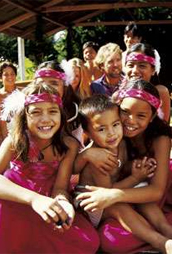Why Settle in NZ?
English is the everyday language of New Zealanders and there is strong English language support for immigrants.
World class education in New Zealand offers an attractive and stimulating academic environment.
A great variety of recreational and cultural experiences are available in a country renowned for its natural beauty. The climate is pleasant with little seasonal change especially in the north - conducive to study and recreation.
The cost of living in New Zealand compares favourably with other countries. You can calculate your cost of living in NZ by clicking on this link https://www.newzealandnow.govt.nz/living-in-nz/money-tax/comparable-living-costs
New Zealand is now the second-safest country in the world for COVID-19, according to a new report by Deep Knowledge Group https://www.dkv.global/covid-safety-assessment-250-regions
The 2017 Global Peace Index, which compares 162 countries for the risk of personal violence, rates New Zealand as the world's second safest country.
Transparency International’s 2017 Corruption Perception Index ranks us the least corrupt country in the world,
Mercer’s 21st annual Quality of Living survey shows that Auckland city ranks third in the world for quality of life
Some other New Zealand cities are also among the world’s most popular travel destinations.
ABOUT NEW ZEALAND
GeographyNew Zealand lies in the southern Pacific Ocean, 1,600 km east of Australia. It is made up of the North and South Islands and a number of smaller islands, with a total land area of 268,021 sq km. Mountain ranges and hill country dominate New Zealand's landscape. One of the most striking physical features is the Southern Alps - Kä Tiritiri o te Moana. These, along with fiords, glaciers and lakes, and the coastal plains of Canterbury and Southland, add to the variety of the South Island scenery. In the North Island, the volcanic interior contains New Zealand's largest lake, Lake Taupo. Most of the country's active volcanoes - Ruapehu, Ngauruhoe and Tongariro - are all usually quiet, although Ruapehu has been mildly active since September 1995. Hot springs, geysers and mud pools form part of the volcanic system to be seen around the city of Rotorua. To know more about New Zealand, visit https://www.newzealandnow.govt.nz/living-in-nz/history-government/a-brief-history |

|

|
ClimateJanuary and February are New Zealand's warmest months and July normally its coldest. The climate is temperate - averages range from 8°C in July to 25°C in January - but summer temperatures occasionally reach the 30s in many inland and eastern regions. The mean average rainfall varies widely - from less than 400 mm in Central Otago to over 12,000 mm in the Southern Alps. For most of the North Island and the Northern South Island, the driest season is summer. However, for the West Coast of the South Island and much of inland Canterbury, Otago and Southland, winter is the driest season. |
DiscoveryPolynesian settlers arrived in Aotearoa / New Zealand about the 10th century, and by the 12th century settlements were scattered around the coastline. The Dutch navigator Abel Tasman visited Aotearoa briefly in 1642. However, it was not until 1769 that the British naval captain James Cook and his crew became the first Europeans to explore New Zealand's coastline thoroughly. PopulationComparable in size and/or shape to Great Britain, Colorado or Japan, The estimated resident population is provisionally 5,002,100 at 31 March 2020.according to Statistics NZ https://www.stats.govt.nz/topics/population |

|

|
CurrencyNew Zealand's unit of currency is the New Zealand dollar (NZ$). Coins have values of 10, 20 and 50 cents, $1 and $2; notes have values of $5, $10, $20, $50 and $100. There is no restriction on the amount of foreign currency that can be brought in or taken out of New Zealand. However, every person who carries more than NZ $10,000 in cash in or out of New Zealand is required to complete a Border Cash Report. Time ZoneNew Zealand is one of the first places in the world to see the new day, 12 hours ahead of GMT (Greenwich Mean Time). In summer New Zealand uses daylight saving, with clocks put forward one hour to GMT+13. Daylight saving begins on the last Sunday in September and ends on the third Sunday of the following March, when clocks are put back to GMT+12. |




